Neuropeptide Y inhibits interleukin-1β-induced phagocytosis by microglial cells
- PMID: 22136135
- PMCID: PMC3239417
- DOI: 10.1186/1742-2094-8-169
Neuropeptide Y inhibits interleukin-1β-induced phagocytosis by microglial cells
Abstract
Background: Neuropeptide Y (NPY) is emerging as a modulator of communication between the brain and the immune system. However, in spite of increasing evidence that supports a role for NPY in the modulation of microglial cell responses to inflammatory conditions, there is no consistent information regarding the action of NPY on microglial phagocytic activity, a vital component of the inflammatory response in brain injury. Taking this into consideration, we sought to assess a potential new role for NPY as a modulator of phagocytosis by microglial cells.
Methods: The N9 murine microglial cell line was used to evaluate the role of NPY in phagocytosis. For that purpose, an IgG-opsonized latex bead assay was performed in the presence of lipopolysaccharide (LPS) and an interleukin-1β (IL-1β) challenge, and upon NPY treatment. A pharmacological approach using NPY receptor agonists and antagonists followed to uncover which NPY receptor was involved. Moreover, western blotting and immunocytochemical studies were performed to evaluate expression of p38 mitogen-activated protein kinase (MAPK) and heat shock protein 27 (HSP27), in an inflammatory context, upon NPY treatment.
Results: Here, we show that NPY inhibits phagocytosis of opsonized latex beads and inhibits actin cytoskeleton reorganization triggered by LPS stimulation. Co-stimulation of microglia with LPS and adenosine triphosphate also resulted in increased phagocytosis, an effect inhibited by an interleukin-1 receptor antagonist, suggesting involvement of IL-1β signaling. Furthermore, direct application of LPS or IL-1β activated downstream signaling molecules, including p38 MAPK and HSP27, and these effects were inhibited by NPY. Moreover, we also observed that the inhibitory effect of NPY on phagocytosis was mediated via Y1 receptor activation.
Conclusions: Altogether, we have identified a novel role for NPY in the regulation of microglial phagocytic properties, in an inflammatory context.
Figures
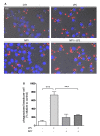


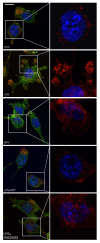
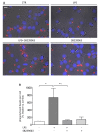
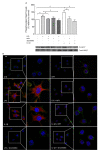
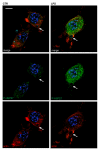

Similar articles
-
Neuropeptide Y inhibits interleukin-1 beta-induced microglia motility.J Neurochem. 2012 Jan;120(1):93-105. doi: 10.1111/j.1471-4159.2011.07541.x. Epub 2011 Nov 17. J Neurochem. 2012. PMID: 22007767
-
Neuropeptide Y modulation of interleukin-1{beta} (IL-1{beta})-induced nitric oxide production in microglia.J Biol Chem. 2010 Dec 31;285(53):41921-34. doi: 10.1074/jbc.M110.164020. Epub 2010 Oct 19. J Biol Chem. 2010. PMID: 20959451 Free PMC article.
-
Signaling pathways involved in anti-inflammatory effects of Pulsed Electromagnetic Field in microglial cells.Cytokine. 2020 Jan;125:154777. doi: 10.1016/j.cyto.2019.154777. Epub 2019 Aug 7. Cytokine. 2020. PMID: 31400640
-
A Neuropeptide Y/F-like Polypeptide Derived from the Transcriptome of Turbinaria peltata Suppresses LPS-Induced Astrocytic Inflammation.J Nat Prod. 2022 Jun 24;85(6):1569-1580. doi: 10.1021/acs.jnatprod.2c00158. Epub 2022 Jun 13. J Nat Prod. 2022. PMID: 35694811 Review.
-
Microglial phagocytosis and regulatory mechanisms: Key players in the pathophysiology of depression.Neuropharmacology. 2025 Jun 15;271:110383. doi: 10.1016/j.neuropharm.2025.110383. Epub 2025 Feb 22. Neuropharmacology. 2025. PMID: 39993469 Review.
Cited by
-
Estrogens, Neuroinflammation, and Neurodegeneration.Endocr Rev. 2016 Aug;37(4):372-402. doi: 10.1210/er.2016-1007. Epub 2016 May 19. Endocr Rev. 2016. PMID: 27196727 Free PMC article. Review.
-
Hypothalamic NPY-Y1R Interacts with Gonadal Hormones in Protecting Female Mice against Obesity and Neuroinflammation.Int J Mol Sci. 2022 Jun 6;23(11):6351. doi: 10.3390/ijms23116351. Int J Mol Sci. 2022. PMID: 35683029 Free PMC article.
-
Mettl3-m6A-NPY axis governing neuron-microglia interaction regulates sleep amount of mice.Cell Discov. 2025 Feb 4;11(1):10. doi: 10.1038/s41421-024-00756-y. Cell Discov. 2025. PMID: 39905012 Free PMC article.
-
Neuropeptide Y receptor activation preserves inner retinal integrity through PI3K/Akt signaling in a glaucoma mouse model.PNAS Nexus. 2024 Jul 26;3(8):pgae299. doi: 10.1093/pnasnexus/pgae299. eCollection 2024 Aug. PNAS Nexus. 2024. PMID: 39114576 Free PMC article.
-
Alternative Pharmacological Strategies for the Treatment of Alzheimer's Disease: Focus on Neuromodulator Function.Biomedicines. 2022 Nov 28;10(12):3064. doi: 10.3390/biomedicines10123064. Biomedicines. 2022. PMID: 36551821 Free PMC article. Review.
References
Publication types
MeSH terms
Substances
LinkOut - more resources
Full Text Sources
Other Literature Sources
Research Materials
Miscellaneous

